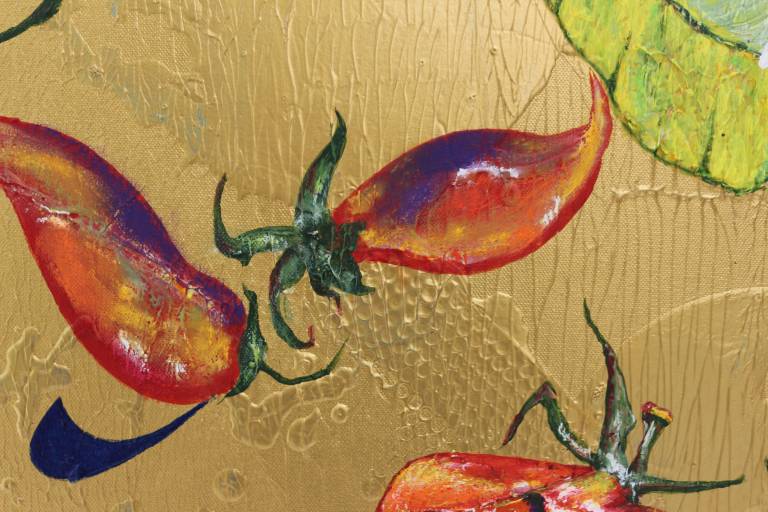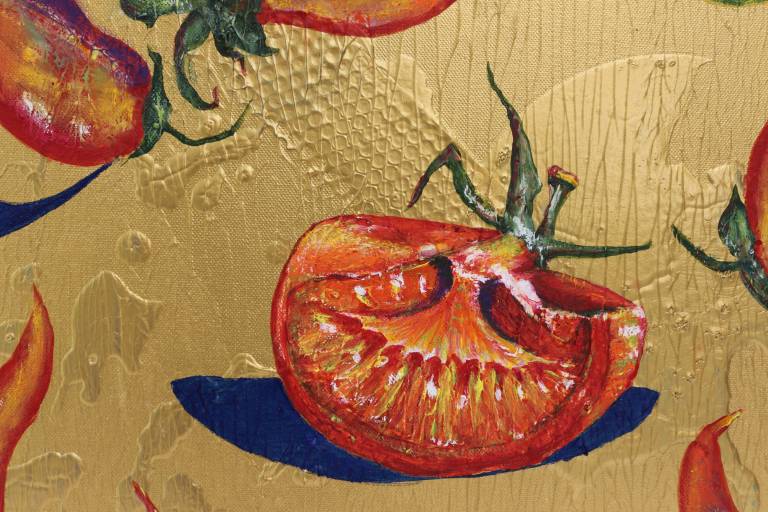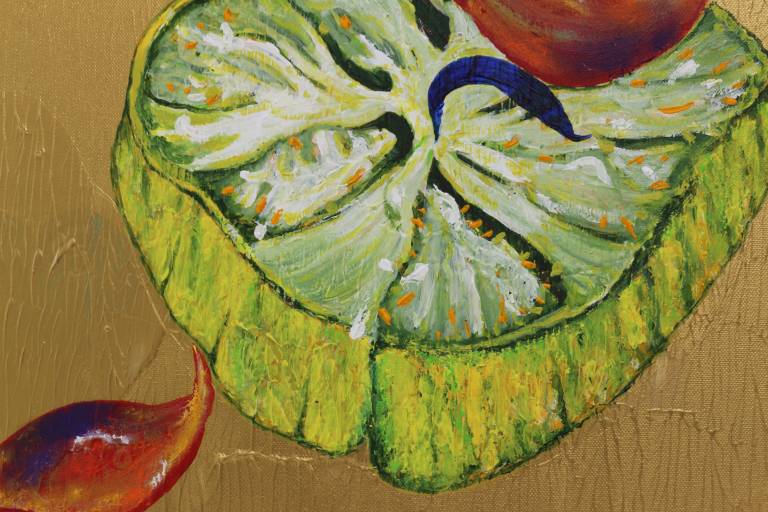TOMATO & CHILLI
- Fruit Routes
- Acrylic and mixed media on canvas
- 60 x 60 x 4 cm (23.6 x 23.6 x 1.5 ins)
- Ref: 646619/298
£ 1,200.00
Classed as a fruit, the tomato has an extraordinary range of varieties. Colours range from red-pink and bright yellows to vivid green, aubergine and even striped tomatoes.
The name comes from Nahuatl, a language still spoken by about 1.7 million people in Mexico and Guatemala. The Aztecs used the word tomatl to mean ‘plump fruit’.
The Spanish Conquistadors brought the fruit to Europe in the 16th century. One account from central Mexico from this era notes:
“The tomato seller sells large tomatoes, small tomatoes, leaf tomatoes, thin tomatoes, sweet tomatoes, large serpent tomatoes, nipple-shaped tomatoes. Also he sells coyote tomatoes, sand tomatoes, those which are yellow, very yellow, quite yellow, red, very red, quite ruddy, ruddy, bright red, reddish, rosy dawn coloured.”
The tomato was a staple item in south America for centuries but was viewed as exotic when it first arrived on Europe’s shores. The fruit was first recorded in Italy in 1548, gradually spreading into the south of France.
The earliest recipe for tomato sauce was published in 1694 by Neapolitan chef Antonio Latini. He said that if you mixed onions, tomatoes and herbs, it created a sauce which could be used with meat – the acidity helped the taste of otherwise bland foods.
The tomato was widely adopted as an economical way to incorporate food into frugal dishes, notably in Tuscany, and it went on to transform the cuisine of Italy – and the world.






